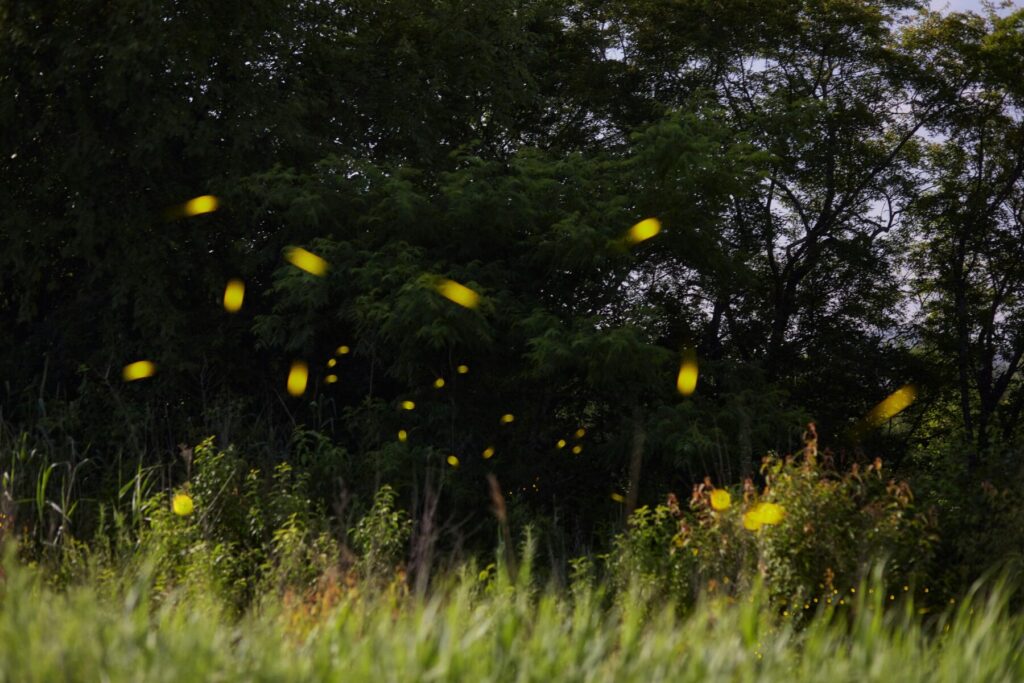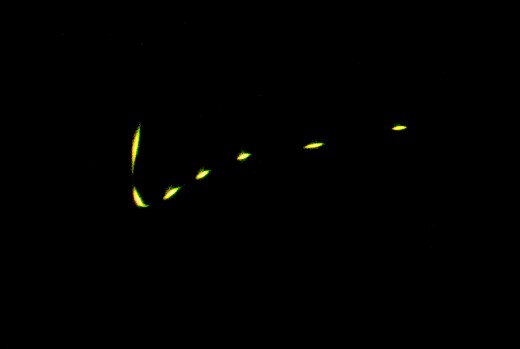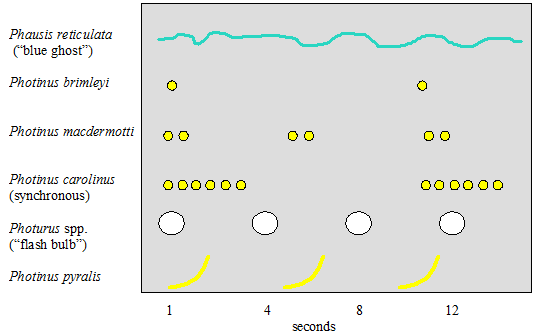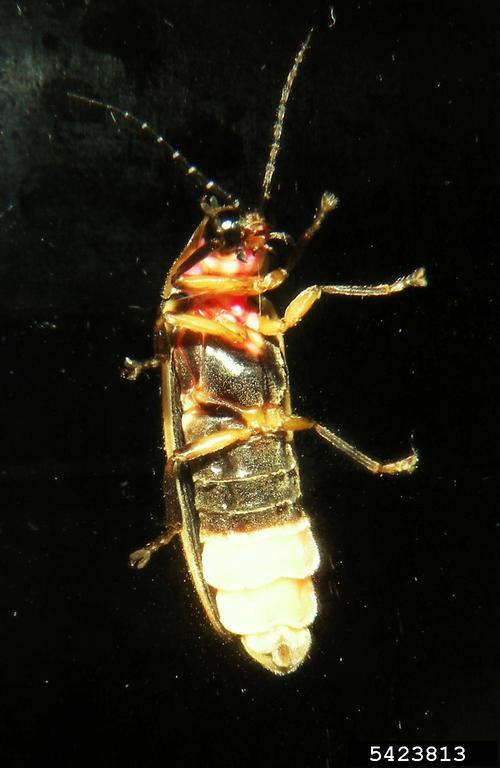
Heather N. Kolich, ANR Agent, UGA Extension Forsyth County
The firefly is probably the first insect I learned to identify. On long-ago summer nights, my cousins and I would chase and capture lightning bugs, as we called them, in cupped hands and watch them glow. We didn’t care that fireflies are ecologically beneficial – the larvae eat garden and lawn pests like slugs and grubs – or that they’re important as pollinators. We were in awe of their bioluminescent capabilities. They glow even in the egg stage.
June and July are the prime months for firefly watching. If you like really digging into nature, you can also participate in the Firefly Atlas (https://www.fireflyatlas.org/about) project and report data to help researchers build information about fireflies in the Southeast U.S. And while you’re counting and identifying fireflies, you might even spot a rare firefly that showed up last summer in the Athens area.
Named “Loopy Five” because of its distinctive flight pattern, the rare Photuris forrestii firefly was first described and recognized in 2018. To put that into historical perspective, Linnaeus began describing fireflies in the mid-1700s, and we’re still discovering new ones. There are an estimated 270 species in North America and over 2,400 worldwide. Since its discovery, the Loopy Five has been reported only in a few locations in north Georgia, northwestern South Carolina, and eastern Tennessee. It was listed as endangered in 2022.

Loopy Five fireflies live in marshy areas and wetlands, but there are over 40 other species of fireflies in Georgia. Fireflies are actually nocturnal beetles. Adult fireflies are only around for a few weeks in the summer. Beginning at dusk, males flash light patterns during flight to attract a mate, and females respond with short flashes from where they wait in tall grass or plants. In a few of the species found in Georgia, females don’t fly.

Different species of fireflies look different, but we don’t have to catch fireflies to identify them. We can read the flash patterns to figure out which species of fireflies are entertaining us at night. The most common firefly in Georgia is the common eastern firefly, Photinus pyralis. The male common eastern firefly flashes and flies upward, creating a “J” of yellow light. We might also see Photinus marginellus, the little gray, which gives a yellow starburst of light every five seconds; Photinus macdermotti, Mr. Mac, who flashes a yellow dot twice, pauses for three seconds, then flashes twice again; and Photuris lucicrescens, commonly called July comet or big Lucy, which makes an upward green streak of light as it flies over plants where females may be waiting. Fireflies in the Photinus genus emit yellow light, while those in the Photuris genus, like the Loopy Five, emit light that appears green.

Unfortunately, firefly populations are threatened by urbanization and habitat destruction. The Loopy Five, for instance, lost its South Carolina habitat to a golf course. Pesticide use and light pollution are additional threats to fireflies.
We can enhance landscapes in several ways that provide habitat for fireflies.
- Plant a variety of flowering plants. Adult fireflies forage on nectar and pollen. They fly at different heights, so plant both tall and short flowers.
- Include trees, shrubs, and tall native grasses in your landscape for habitat.
- Leave leaf litter and plant debris in some areas of the landscape. This is where fireflies lay eggs.
- Turn off outdoor lights during summer nights. Light pollution can disrupt firefly mating.
- Limit pesticide usage in the landscape.
For optimal firefly watching and monitoring, plan to be outside in a comfortable spot 30 minutes before sunset. To protect yourself from biting insects, apply insect repellent before heading out to your viewing spot, and/or wear long sleeves and pants. Turn off outdoor lighting, bring a beverage and a nature-loving pal, and settle in for the show. The “fireworks” might last up to two hours. Be sure to watch for flashes near ground level and higher up in the trees to see different species.
If you don’t identify a Loopy Five firefly in your observations, you may hear a sigh of relief from the other fireflies in your yard. Females in the Photuris genus lure in Photinus males by imitating the flashes of Photinus females. When the Photinus male comes to her beckoning, the Photuris female eats him for dinner.